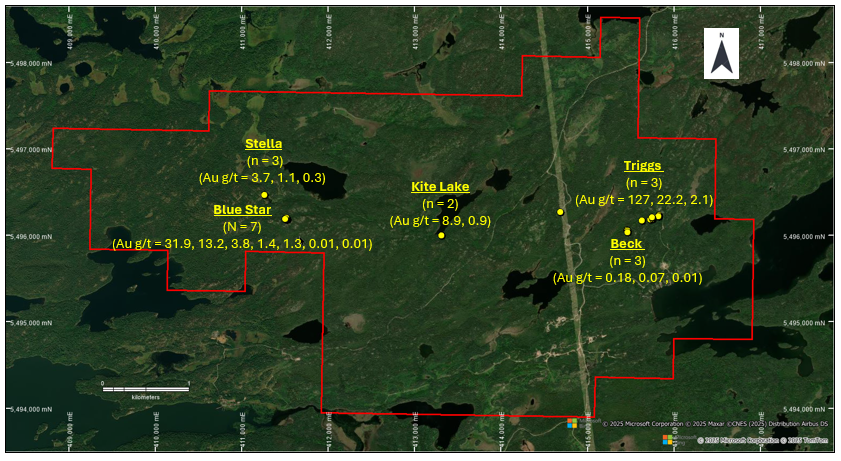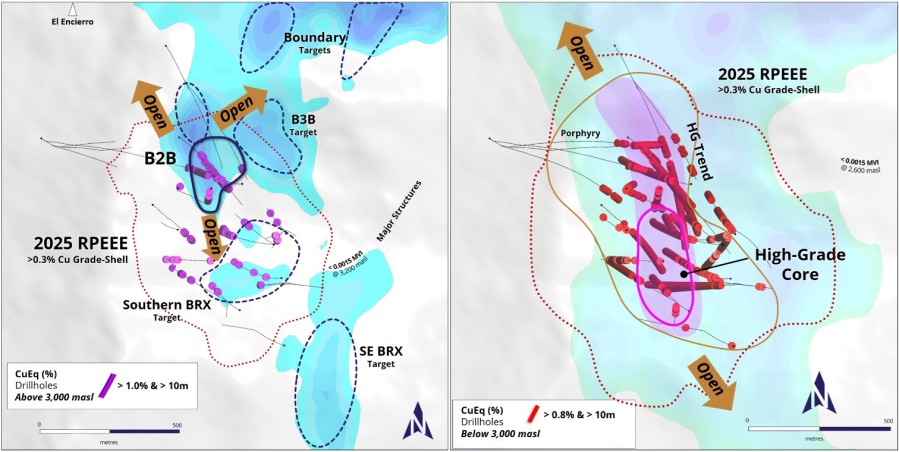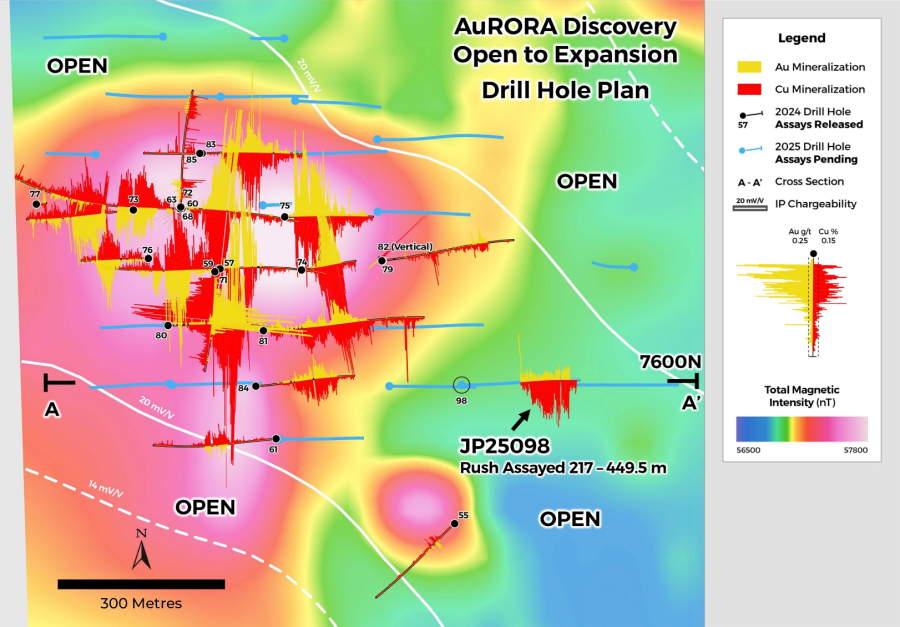Vancouver, British Columbia--(Newsfile Corp. - May 11, 2017) - Arizona Silver Exploration Inc. (TSXV: AZS) (the "Company") is pleased to provide a quick update on exploration drilling results to date at the Ramsey Silver Project, La Paz County, Arizona.
RC Hole R1702
Reverse circulation ("RC") drill hole R1702 has intersected massive silica with locally banded quartz-chalcedony veins over a down- hole distance of 145 feet (44.2 metres) between depths of 355 feet (108 metres) and 500 feet (152.4 metres). Hole R1702 was drilled at an azimuth of 90 degrees at an inclination of -65 degrees. The silica is variably dark grey to black with local colour-banding. Narrow thin colloform banded white to pink chalcedonic to fine quartz veinlets are visible throughout the interval, as are occasion zones of bladed calcite and some open space textures. Euhedral biotite is present throughout the interval as are fine-to medium grained (< 1 mm) black sub-metallic grains. The latter are interpreted to be sulfides, as the drill intercept was preceded by approximately 10 feet of a strong yellow (jarositic?) oxide interval, believed to be derived from the oxidation of the underlying sulfides. Minor white clays accompany the massive silica intercept. A 30 feet (9.1 metre) cap of argillically altered lithic tuff or breccia overlies the massive silica intercept, which in turn is overlain by 310 feet (94.5 metres) of cemented alluvial cover.
Hole R1702 was designed to test the heart of the strong eastern IP chargeability anomaly along line 3 (grid 450N). The massive silica intercept and associated disseminated fine grained sulfides (?) appears to be nearly coincident with the originally interpreted depth of the IP response. The true thickness of this intercept is currently unknown. An adjacent pilot RC hole through the cemented alluvium has been drilled to a depth of 300 feet in anticipation of bringing in a core rig to core the massive silica interval in order to see in detail the textures and the attitude of banding that comprise this impressive intercept. A core drill is scheduled to arrive next week. Drill samples have been delivered to the ALS Minerals sample preparation laboratory in Tucson, Arizona and expedited turn-around has been requested. The host rock of the massive silica intercept is a flow-banded rhyolite believed to be the same or similar rhyolite to that which overlies the historic Ramsey vein. Drill hole R1702 is located approximately 450 metres north of the old Ramsey Mine workings.
RC Hole R1701
RC drill hole R1701 was drilled vertically from the same collar location as drill hole R1702. It intersected stockwork black and green silica veins and veinlets, some banded, from a depth of 650 feet (198 metres) to the end of the hole at 880 feet (268 metres). Cemented alluvium was 350 feet (107 metres) thick in R1701, underlain by unaltered flow-banded rhyolite which graded downward into strongly silicified flow-banded rhyolite in the interval with the stockwork silica vein system. The detachment fault which hosts the historic Ramsey vein was intersected at 775 feet (236 metres) where a green sugary textured massive silica zone 10 feet (3.05 metres) thick with disseminated black sub-metallic sulphide (?) minerals occupied the fault between the overlying silicified rhyolite an underlying hematite-rich brecciated quartzite and conglomerate. Green stockwork silica veining continued into the footwall of the detachment fault to the end of the hole at 880 feet. Barite is common across the interval of the detachment fault. This detachment-hosted interval is similar to the silver-bearing intercepts encountered in the four core holes drilled in the Ramsey mine area in late 2016, but without this degree of silica veining. The true thickness of this silica stockwork zone is currently unknown. Drill samples from below the cemented alluvium have been delivered to ALS Minerals sample preparation facility in Tucson, Arizona.
With only two RC holes into the system currently it is unclear whether this stockwork silica zone in R1701 connects with the much more massive dominantly black and green banded silica intercept in R1702. The two silica intercepts are about 100 meters apart on section. A third hole will be drilled on section at -65 degrees at 270 degrees azimuth to test the western extension of the silica stockwork system and the up-dip projection of the detachment fault surface. A second drill pad has been prepared 150 metres to the south of the location of the R1701-R1702 drill pad, and another fan of holes will be drilled from this second pad. A third fan of holes will be drilled on patented claims south of and down-dip of the old Ramsey vein mine workings.
Successful drilling results will be followed by any necessary permit amendments and continued drilling.
Greg Hahn, President and CEO and a Certified Professional Geologist (#7122) is the Qualified Person under NI43-101 responsible for preparing and reviewing the technical data contained in this press release.
Please visit the Company's website to view new images & IP response at www.arizonasilverexploration.com and join our contact list for information and direct mailing of press releases.





